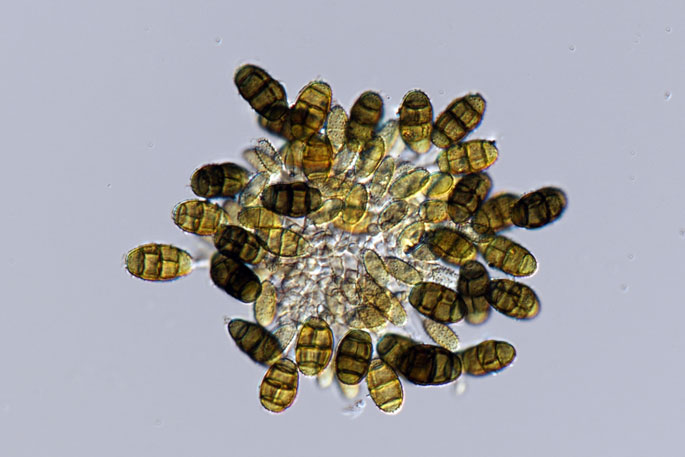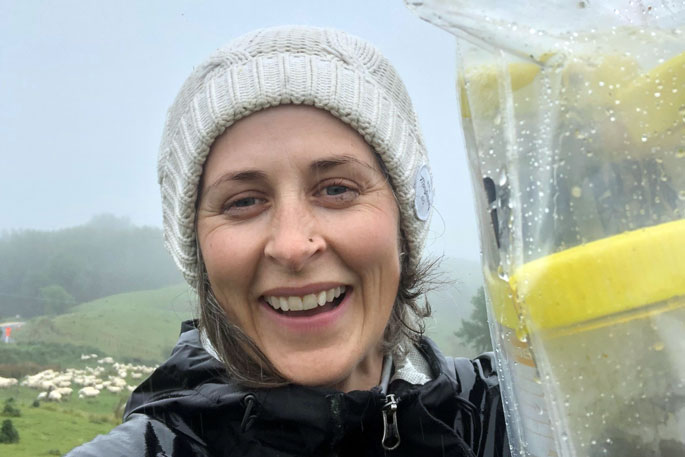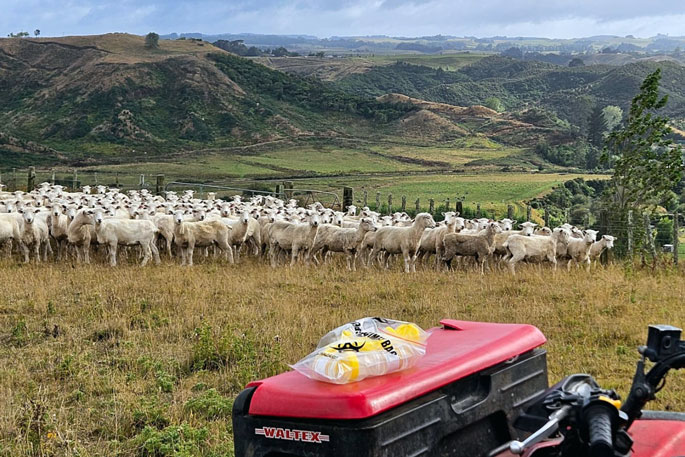As part of a broader Beef + Lamb New Zealand (B+LNZ)-led Eliminating Facial Eczema Impacts programme, a new three-year study is under way to understand the risk of Facial Eczema across New Zealand.
Principal Scientist of Animal Health Research at B+LNZ, Cara Brosnahan, is leading this study.
The EFEI programme is backed by $20.7 million in funding over seven years, with contributions including $9m from B+LNZ, $8.3m from the Ministry of Primary Industries (MPI) through the Sustainable Food and Fibre Fund, and the remainder from 14 partners across the sector.
“The study had 202 participating farms from all over New Zealand in the first year and we hope to build to 350 farms. Sixty-six farms are in the South Island, which isn’t traditionally a FE area,” says Cara.
Pasture spore counts usually start in January, but this study doesn’t want to assume when the spores start appearing or that all years will be the same. They will be collecting sheep poo samples starting in October through to May.
Sheep poo collection
Each farm samples from a mob of sheep that will be on the farm from October to May and follows them taking 10 fecal samples every two weeks. Both dairy and meat sheep are in the study.
Methods for collection of fresh samples vary between moving the mob into a paddock corner and waiting for them to poo or arriving at the paddock early and waking the mob up and collecting their first poo of the day.
 Out collecting samples after a good 24 hours of much needed rain. Photo: Baylee Hodges.
Out collecting samples after a good 24 hours of much needed rain. Photo: Baylee Hodges.
“Each farmer has a box including all the kit required to collect 10 individual samples in 10 different pottles so we know multiple animals are used. These are couriered to Awanui Veterinary in Palmerston North for analysis.”
Extensive other data from each farm is also collected. This includes weather data from the MetService virtual climate station, pasture information, paddock aspect and altitude, irrigation, sheep age and sheep breed.
“The samples are tested for faecal FE spore counts and results sent back to the farmers usually within seven days. This year we arranged a webinar with the farmers in the study to discuss early results and answer any questions. The yearly results will be analysed by Ingenum, shared with the study participants and then made publicly available.”
Year one findings
After one year, fungal spores were found in every region except the west coast of the South Island.
Cara explains Pseudopithomyces species spores look very similar under the microscope, so it is hard to establish whether it is the type that produces sporidesmin, the mycotoxin which causes FE when ingested or one that is harmless.
“We are developing a polymerase chain reaction (PCR) test with dnature diagnostics & research ltd to genetically identify which type the spores are.”
 Psuedopithomyces species spores under the microscope. Photo: Diana Lee, Landcare Research.
Psuedopithomyces species spores under the microscope. Photo: Diana Lee, Landcare Research.
Information from the study provides a more accurate picture of the locations of high-risk FE areas in New Zealand so farmers can be better informed about FE in their region. Ingenum will also try to use the data to build a predictive model to provide farmers with risk prediction information.
“Establishing the higher risk areas earlier in the FE season allows farmers to plan their prevention programme before their livestock are exposed to the toxin.”
Pasture management, including moving away from rye grass (which the fungus favours) in the FE season to other fodder and keeping stock from grazing the high-risk pastures in the fungi season are physical steps that can be taken. Zinc for prevention is widely used in dairy cattle but not as commonly used in sheep.
 Principal Scientist of Animal Health Research at B+LNZ, Cara Brosnahan, is leading this Facial Eczema study. Photo: Supplied.
Principal Scientist of Animal Health Research at B+LNZ, Cara Brosnahan, is leading this Facial Eczema study. Photo: Supplied.
Breeding FE resistant genetics into sheep flocks remains the most sustainable option for farmers, but it takes several seasons to achieve results.
“We are very grateful to see so many farmers physically involved in this study and providing us with samples for this study,” says Cara.
“B+LNZ works to ensure that our research is conducted in collaboration with farmers, researchers, and rural professionals. It is crucial to have a farmer perspective throughout the development of farm strategies to FE.”



0 comments
Leave a Comment
You must be logged in to make a comment.